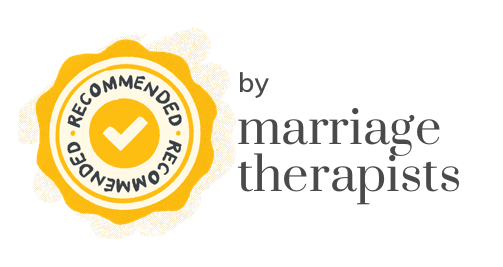
Codependency in Relationships: 10 Tips for Recognizing and Breaking the Cycle
When you are in a relationship, it’s crucial to be able to rely on your partner for support, but there is such a thing as being TOO reliant on your partner. If either you or your partner are too dependent on the relationship, then you might be in a codependent relationship. Codependency is defined as extreme emotional or psychological reliance on a partner. In normal, healthy relationships, both partners are able to rely on each other in a way that allows for individual growth and fulfillment. But in a codependent relationship, one person is often the emotional and psychological support, playing the role of the caretaker, while their partner has their every need attended to. Both partners typically like their role and enable the other, which is what often makes codependent relationships cyclical. The caretaker likes feeling needed, and the other person likes being taken care of and having the constant support of the partner. Some psychologists refer to this role as the caretaker, while others call this person the enabler because they feed into their partner’s need for approval and support.
While both partners can be fulfilled in the role they play in a codependent relationship, that doesn’t mean that it is healthy. If you recognize codependent patterns in your relationship, you and your partner should work towards addressing your codependency.
Here are some things to look out for if you are concerned that you may be in a codependent relationship, and tips for overcoming codependency:
1. Extreme people pleasing
One key sign of a codependent relationship is when one partner is an extreme people pleaser. This partner (the codependent partner) will often overlook their own wants and needs (or refrain from sharing them) so that they can please their partner. The codependent person often feels as if the support of their partner is essential to their worth, and so they bend over backwards to try and appease and accommodate their partner. While compromise is an important part of every relationship, it’s important that both partners are compromising. If one partner always gets their way, while the other has to make all of the sacrifices, then this is a sign of a codependent relationship.
Constantly sacrificing your preferences is a sign of people pleasing, not compromise. If you find that you are constantly trying to please your partner, focus on taking time to prioritize some of your needs. This can be difficult to do if you are in the practice of putting yourself last, but slowly learning to listen to your wants and needs will help you avoid people pleasing tendencies. In some cases, taking time to take care of yourself can also inspire your partner to do the same.
2. Lack of boundaries
In codependent relationships, there are often a lack of boundaries that are necessary for a [healthy relationship](https://helCreating boundaries provides partners with autonomy and establishes that each partner is responsible for their own happiness and emotional state. In codependent relationships, partners often rely on each other for everything, which means that no one has autonomy. The lack of boundaries normally arises because one person doesn’t recognize or need boundaries, and the other one doesn’t enforce the boundaries that they need. This lack of boundaries causes the people-pleasing partner to give all their time and energy to their partner, which is not sustainable for a healthy relationship.
Of course, there is a range of different kinds of codependent relationships, but it is important to note that these relationships can often become abusive because of the inherent power dynamic between caretaker/enabler and the dependent. Abusive relationships are more common in relationships that lack boundaries. To break the cycle of codependency, work on establishing boundaries in your relationship. Again, this can be difficult to do if you are not in the practice of setting and enforcing boundaries, but starting small can help you establish better boundaries moving forward.
Start being honest with yourself and your needs, download Relish and learn more about setting boundaries. Get full access to our expert relationship coaches, therapist approved quizzes and more, free for one week - no strings attached!
3. Low self-esteem
Codependent relationships are often rooted in low self-esteem on behalf of one or both partners. The codependent partner (the person who seeks the approval and support of the other), may need constant affirmation and emotional support because they do not believe in their own self worth. They might not think that they are worthy of love, and so they accept a strenuous relationship that gives them purpose. They feel like it’s necessary to sacrifice everything in support of a partner in order to have purpose in the relationship and in their life.
The caretaker/enabler partner also probably has low self esteem and needs to feel needed by their partner in order to feel purposeful. This is a great example of the cyclical aspect of codependent relationships. Both partners feed into the other’s need for approval, because they need that approval to feel good about themselves.
Overcoming issues with self esteem can be very difficult, especially if both partners look to the relationship to define their self worth. If you or your partner have issues related to your self esteem, it is important to focus on self care and, in some cases, turn to a professional to help work through your self worth and confidence.
4. Reactivity
In codependent relationships, it’s common for both partners to be reactive. The codependent person’s identity is based on people pleasing which causes them to be overly concerned with the other’s well being and, perhaps, out of touch with their own needs. If you are constantly trying to please your partner, you will most likely be reacting to their actions and wants, rather than acting in a proactive way. This also has to do with the lack of boundaries that we talked about. Codependent people tend to internalize their partner’s emotions and take responsibility for them which can cause them to act in a reactive way.
The caretaker/enabler role is also a reactive one. Constantly having all of your needs indulged by a codependent partner often leads to a sort of entitlement can also cause people to become reactive. They expect their partner’s to give into their every whim (which they usually do), so in the rare case that this does not happen, or if other people in their lives don’t act similarly, they can become reactive.
A great way to avoid reactivity in your relationship is to schedule check-ins with one another. Check-ins are conversations that address your feelings, expectations and happiness with your relationship. Check-ins work as a proactive way to address any problems in the relationship before they turn into conflicts. Though you won’t be able to avoid all conflicts, you will be able to navigate disagreements and handle situations in a proactive way if you are checking in with your partner on a frequent basis. Doing this can help reduce the reactivity in your relationship and help break the cycle of codependency.
5. High levels of anxiety
While it’s common to have low levels of anxiety at different stages in a relationship (think of the butterfly stage, anxieties about taking the next step, etc. etc), your relationship should not be characterized by high levels of anxiety all of the time. In codependent relationships, the codependent person often feels high levels of anxiety related to pleasing their partner and making them happy. Because no person can be happy or pleased all of the time (even if you do EVERYTHING for them), their bad moods will often be the source of a huge amount of anxiety for their partners.
People who naturally have anxiety may also be drawn to the caretaking role in a relationship, because it serves as an outlet for their anxiety. As we mentioned before, partners often feel fulfilled in their codependent relationships, even if the terms of the relationship are unhealthy. Whether or not you struggle with anxiety as an individual, it is important not to seek anxiety in a relationship or tolerate high levels of anxiety in order to please a partner. Dealing with feelings of anxiety through self care, therapy or other, healthy means is a great way to avoid high levels of anxiety in your relationship.
Relish has all the benefits of therapy, at a fraction of the cost. In your pocket. At your convenience. Fully customized for you and your relationship. What do you have to lose? Get started for free!
6. Substance abuse
Codependent relationships are common if one person has a problem with substance abuse. In these scenarios, the codependent partner enables the addict's actions by bending over backwards to do things for them, support them and love them despite their destructive, unhealthy behaviors. In these situations the codependent person is actually an enabler to the addict, either knowingly or unknowingly encouraging the addictive behavior because of a need to be needed. This is one of the more serious types of codependent relationships, and can lead to extended addiction, and failure at recovery programs for the addict. If you or your partner have a substance abuse problem that is enabled by the relationship, then this could be a sign that you are in an unhealthy codependent relationship.
It’s possible to be in a relationship with an addict that is not codependent if you hold them accountable, and actively support their recovery process. But this can be hard to manage with little experience and other compounding factors that make certain people more prone to codependency in the first place.
If you or your partner are struggling with issues related to substance abuse it can take a huge toll on your relationship. It is important to address these issues for the health of your relationship, but also for your own health! Substance abuse issues can be difficult to tackle without the help of a professional or a formal program. Looking to things like Alcoholics Anonymous, Narcotics Anonymous, in-patient care or other rehabilitative programs is an important tip for breaking the cycle of codependency if substance abuse is a part of your relationship.
7. Nurturing yourself and your needs
Because a lot of codependency arises out of low self esteem and a lack of boundaries, an important way to break the cycle is to focus on self care and self love. The first step in doing this, is recognizing that you and your partner are both in control of your own emotional state. You cannot rely on a partner or the relationship to make you feel fulfilled. Once you are able to recognize your own agency over your emotions, it’s important to take the necessary time and energy for yourself in the relationship rather than focusing all of your mental capacity on your partner.
This can be hard to do (especially if you struggle with setting and enforcing boundaries), but this is absolutely necessary. Once you give yourself permission to take time and energy for yourself, focus on things like self care and self love. Look into mindfulness activities, take up a hobby that you enjoy (also a great way to practice spending time apart as a couple), reflect on how you are feeling. This of course takes time and practice, but if you are both able to nurture yourselves and your needs, then you will be less reliant on a partner to do so.
8. Establish boundaries
Like we said above, a lack of boundaries is often the cause of codependency in a relationship, so working to establish boundaries is a great way to try and break the cycle of codependency. We understand that establishing boundaries is often easier said than done, especially when you will have to continually enforce these boundaries in order for them to work. In order to nurture yourself and your needs, you will need to establish boundaries in the relationship. Setting boundaries can look like, “I do not have the time or energy to do that today,” or “I need to take some space to myself this afternoon.” Setting boundaries is all about asking for what you need in the relationship, and not feeling guilty or bad for voicing your needs. Introducing healthy boundaries into your relationship will help break the cycle of codependency.
Learning how to set boundaries and say “no'' takes patience and practice. Let Relish help you navigate tough conversations and build confidence with unlimited one-on-one coaching, personalized advice and more. Try our award winning app free for 7 days.
9. Learning to recognize abusive behavior
Like we said before, codependent relationships run the risk of becoming abusive because there is an uneven power dynamic in the relationship. The caretaker/enabler will often take advantage of the codependent person through manipulation, verbal abuse and even physical and sexual abuse knowing the codependent person is not able to stand up for themselves or leave the relationship. The abuse often plays off of the codependent person’s lack of self esteem and knowing that they won’t leave the relationship because it provides them with purpose.
The abuser will often explain how much the codependent person means to them, but will then treat them badly and aim to decrease their feelings of self worth so that they become even more reliant on the abusive partner. Hearing things like “Only I could love you” is a sign of emotional abuse. While it is possible to work through some codependent relationships, it is not possible to fix an abusive relationship. Even if your partner can change, it will come at a great emotional expense that may not be worth it in the end. If you find yourself in an abusive relationship, you should turn to a close friend or trusted professional to make a plan to leave the relationship.
10. Therapy
Navigating a codependent relationship, and breaking the cycle can be extremely difficult to do on your own. Especially if you are not able to see the codependent patterns from an objective point of view. When you are in the thick of a relationship, it can be very difficult to see red flags and codependent habits. Even if people that are outside of the relationship point these things out, it is tempting to become defensive of your relationship and your actions.
Sometimes professional intervention is a critical part of breaking the cycle of codependency in a relationship. A lot of therapists specialize in codependent relationship therapy, and have skills and experience helping couples overcome toxic codependency. Codependency is a common problem, so professionals have a lot of experience helping couples overcome codependency and establishing new, healthier patterns in their relationships.
Relish
If you are interested in exploring therapy to address codependency in your relationship, but do not have the time or money to go to a traditional therapist, then you and your partner should explore Relish. Relish offers all the perks of traditional therapy, without the formality and inflexibility that renders traditional therapy unavailable to a lot of people. Relish is a relationship coaching app meant for modern couples who want to address the struggles in their relationship, including struggles related to codependency.
After signing up for Relish, you and your partner have access to relationship coaches that can help you set and achieve goals in your relationship. The app has tons of activities, quizzes and articles to help you understand the problems in your relationship and work to improve them. In codependent relationships, it’s common for one person to feel as if they do not have autonomy in the relationship. While you and your partner use Relish together, the unique user experience can empower partners and help you work on personal goals that will improve the relationship. The more individualized couples therapy approach is an excellent option for couples that are looking to break the cycle of codependency.
Relish offers one-on-one coaching, and focuses on goal setting so that you and your partner can achieve your #relationshipgoals and break the cycle of codependency. Don’t wait, try our award winning relationship coaching and self-care app free for 7 days.









